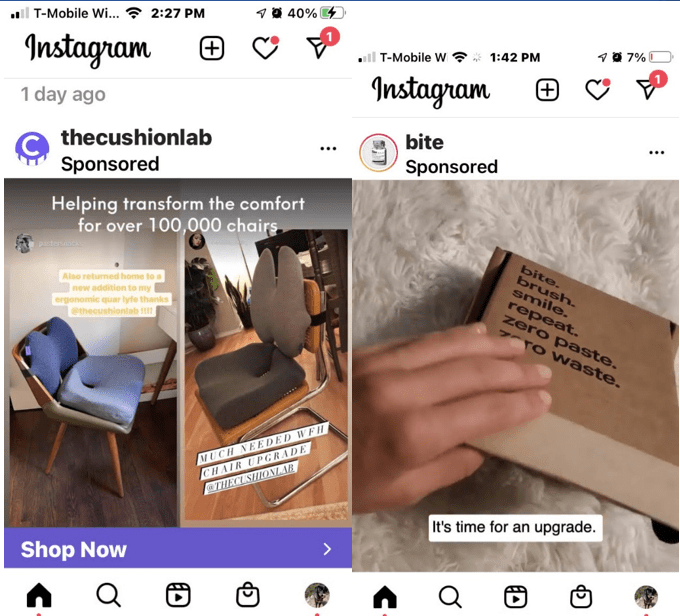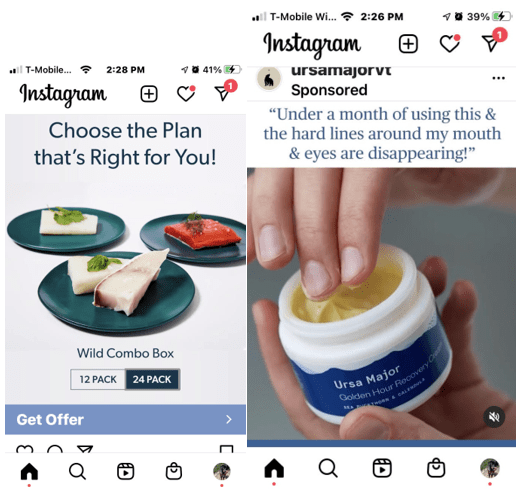Joy Wentzel
Title of Lesson: What is my social media platform trying to sell me?
Grade Level: 9th-grade health class
Specific Standard Addressed: Washington State Heath Education k-12 Learning Standards 2 (student will analyze the influence of family, peers, culture, media, technology, and other factors on health behaviors) and 3 (student will demonstrate the ability to access valid information and products and services to enhance health).
Description of Lesson:
Using Project Sharp’s documents on Developing Habits of Inquiry, we will come together as a group to look at a variety of ads from our social media feeds. A week prior to this lesson, I will ask students to pay attention when ads pop up on their favorite social media platforms and take screenshots for sharing (5-10 would be a good number to aim for). While there are probably lots of ads, I would like them to focus on ads that are selling them things that promote health, body care, beauty, and such. For those students who do not use social media or do not come to class prepared, I will have a collection of ads from various social media sites for them.
I did not have to go more than one minute on Instagram and these ads popped up.
I am hoping just having the task of looking for ads, a week prior to our lesson, students will start to notice the ads and how often they pop up. They may even start to see patterns in their ads. Do they put you in a certain demographic? Why are my ads different from someone who is on Instagram sitting right next to me? How do the ads I get from Instagram define me? When I see them, how does it make me feel? Often we scroll past the ads and do not recognize that we are being bombarded by them. They seem created to look just like someone’s feed from people they follow. Why is that?
Once we gather in person, we will take a minute and look at one of my ads (we could use the examples above) and use the Project Sharp Key Questions When Analyzing Media Messages. From here we can have a lively discussion using the prompts.
Next, students will participate in a shared Google Doc Activity where they will choose one of their ads and paste it into our class document. We will then partner up and each partnership will choose an ad that interests them (from the shared document) and answer the questions from Project Sharp. This partner activity should take about 10 minutes. We will then reconvene as a whole group and discuss our overall findings and realizations. What did we notice? How does this make you feel now when you scroll through your social media? How do these ads influence your decisions when it comes to health? What are the pros and cons of this?
Follow-Up Activity: We could come back together and discuss the importance of analyzing media messages (and what we learned from the above activity). Who needs to know this? How can we help people understand this information? What platforms do we have access to? Project Sharp made a poster that is a bit overwhelming and has much too much information (even though it is all so helpful). Could students make short PSAs or “ads” for our school social media platforms to help students, staff, and parents have access to this information? Creating media messaging is another great area for students to experiment with. Our high school has Apple TVs in the main common areas (a great spot for a PSA), a website that could be overhauled with student participation (my library website could be a spot too) and I have a library Instagram. We could also make messages specifically for our middle school students and put them on their website and Apple TVs. The possibilities are endless. The second page of the Project Sharp Key Questions document focuses on Creating Media Messages). Ultimately, I hope students will see that when they use something that is free (social media) THEY are the product. They need to put new goggles on and be savvy consumers of information (and creators).
Share This Page:


